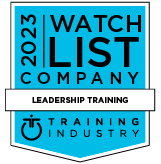Creating a Culture of Employee Engagement: A Thriving Workplace

Contents
The Role of Culture in Employee Engagement
Culture is a very popular word right now and words are easy to weaponize.
At DX we have been lucky enough to be part of many culture and employee engagement transformation projects, at team, functional, and organizational level. See one of my favorites with The Oncology Institute here.
When you get down and dirty with clients and truly become a passionate partner to their cultural and employee engagement success, you learn a lot purely by doing and experiencing it. As Richard Branson would say,
"The best way of learning about anything is by doing.”
As we have done a lot of “doing” we have done a lot of “learning” about the doing.
Culture is a living breathing organism. It adapts and evolves with time. If you’ve had the same values for 100 years, that’s a problem! I hope these lessons from our experiences help with a re-think of your culture strategy.

Culture is a CEO and Executive Team Problem.
Culture is a mirror of leadership. The moment you “delegate” culture to HR, employees will start to question it. This can impact employee engagement negatively. The question in their heads when it becomes another HR program is, “here we go again, another short-term program that eventually fizzles. This can’t be that serious.”
Whose culture is it anyway? The Executive’s. They are accountable for culture. It starts and ends with them. It must start top-down, and leaders must lead by example. You cannot expect of others what you are not willing to do yourself.
Culture is a set of attitudes, beliefs, behaviors, and values. So, if your leaders are embodying all the qualities of a bad culture, employees will follow suit, therefore these qualities need to be eradicated at the very top level first.
Your leaders set the tone. By and large, staff don't really listen to what leaders say, they watch and mimic what their leaders do. So, if something is amiss organizationally, look at what the Executive’s and Senior Leaders are doing to enable it. The culture of a team comes down to the worst behavior the leader is willing to tolerate. So, if you have defined values, and one Executive does not align with those values, the whole organization is talking about it.
“If the CEO is willing to tolerate that, then it's ok for us to do it too.”
I have seen this at many organizations I work with. I often ask the CEO “Have you ever fired someone at the Executive level for not aligning with the stated values?” before we start working together to see how serious they are.
If they say no, I must question whether this is a fight worth fighting.
Building a Value-Driven Culture
Make culture simple!
Our brains have limited capacity and are terrible at multitasking so we can’t make it too complex. If your employees don't understand it, they will question it. Be clear on what, why and how. Especially the why.
Patrick Lencioni states in his book ‘The Advantage’, “You should not have more than 5 or 6 values. Values drive how people think. How people think informs how people behave. How people behave and the consistency between leaders and their teams, builds a strong culture. Values alignment is how you win the engagement and retention of the great talent war.”
The people in your company already have the answers.
Don’t steal their autonomy and creativity. Find ways to give them a voice in your future and have a say as to how your organization’s values are embodied.
Use values effectively.
Core company values should be front and center, and leaders should recognize and reward those who make them part of their daily work.
These values should seamlessly weave into one-on-one interactions, with ongoing feedback that measures how effectively employees are embracing and embodying them. Employee engagement surveys also ought to be a canvas for exploring these values and culture behaviors.
Core company values need to be hard-wired into everything. Not just words on a website.
The Psychology Behind Culture Change
Shifting a culture takes time so have empathy for your people.
You are asking people to form new habits and re-wire years of "this is how we did it". Be patient and leverage the science of learning. The AGES model by the Neuro-leadership Institute, and reading The Power of Habit by Charles Duhigg, will give you greater context for how hard it is to change a habit.
Patrick Lencioni says in “The Advantage” it can take years to evolve a culture.
Self-awareness is not self-created.
For change to happen, people first need to know what they need to change. They need to see how ineffective their old habits are and without a dose of self-awareness that there is need for change, most will think they already are doing what you are asking them do to or resist what you are asking them to do. As Tasha Eurich says in her book Insight,
"Self-awareness is the meta-skill of the 21st Century."
Blissful ignorance and unconscious incompetence are costing you millions.
Psychological safety needs to be part of the culture. Without effective feedback, transparency, and honesty, it's improbable that you’ll be able to align the whole organization to the aspired values and culture. Psychological safety should not be another HR program, like DEI, it needs to be woven into the values. And if you value feedback, then daily feedback needs to be the behavior habit as expected.
Leaders need to create the environment for their chosen culture to flourish through their actions. There is no point in having clear and simple values and a strong cultural purpose if everyone thinks they are perfect at executing it, it’s simply not true.

Commitment and Adaptability in Modern Workplace Culture
It takes lots of energy.
New habits die young. You need a robust leadership development plan that starts with the Executives modelling the way forward. If they don’t do what they say, it will lead to cultural debt and cultural conning. This goes back to the employees questioning the priority and commitment. The moment there is a grey area, you lose momentum.
Values must be embraced by leaders, and leaders must know they are not wired to lead with values. The neuroscience of leadership means no one was born to embrace people-first values. Leaders need to be trained to be developed.
 It takes a lot of resources
It takes a lot of resources
To change the way people think and act goes beyond a few town halls, an eLearning tool to the masses, a PowerPoint presentation delivered by HR, flextime, fun Fridays, and some generic training. It will need heavy investment in both money and time. It’s about what people do, not what they say. To quote Maya Angelou,
“I've learned that people will forget what you said, people will forget what you did, but people will never forget how you made them feel.”
Human instinct is self-preservation. Leadership is team preservation. It will take a lot of habit-shifting and training to motivate and inspire all your leaders to embrace the culture.
It takes commitment.
Your organization needs to buy into the movement. And not just the good behaviors and values, but also calling out the bad. Hiring and firing should be based on the aspired culture. From our initial research, it appears that social pressure is the principal contributor to behavior change.
Leverage peer-to-peer accountability and call out bad behaviors, and in some cases, let go of those not on the bus. The moment you do that, people take notice.
If you "let" people behave counter to the culture, the employees will question it. The culture of a team comes down to the worst behavior the leader is willing to tolerate. So, when an Executive fires another Executive or a team leader fires their top performing team member who is toxic, that is when you know culture is serious.
Just because we’ve done it this way since the day of dawn, it doesn’t mean it’s right.
Don’t let cultural norms blind you or be an excuse. Be empathetic as to where people are located, but if it’s your culture, then it’s your culture no matter where you are in the world. For example, we teach a course on feedback.
If one of your values is to provide candid feedback, know that in some regions of the world, this is the opposite of the norm. That doesn't mean they are right or wrong, it’s just how they have done things. This does not mean they can't do it, but it might be harder for them to change.
Culture is constantly evolving and adapting to the times, and considering culture is a mirror of leadership, leaders must be just as adaptable. An adaptable culture is more likely to have engaged employees.
To create a culture that works, core values need to be embedded into the culture-based discussions, and in forward-thinking strategic planning of the company.
In all of this, apply Carol Dweck's work on growth mindset to everything you do.
A fixed mindset is the belief that I am born this way and there is nothing I can do to better myself. A growth mindset is a belief that through effort, grit and determination, I can always improve. You can apply the same mindset to your culture.

For 30 years or more, we have had to endure the fact that “creating shareholder value” and “the drive for results” was the focus of many of our businesses. The modern workplace is shifting towards employee engagement.
The good news is that the modern workplace is changing, and those who change with it will not just survive but thrive. If you don’t focus on the people who get the results, you’re setting yourself up for long-term challenges as we are producing fewer babies coupled with the fact that there are now more job openings than people to fill them.
Remember, the power is in the hands of the people.
Transform Your Culture with DX
Get in touch and let’s discuss how DX can transform your company culture through leadership training programs, keynotes and more.
Insights

Subscribe to Our Monthly Newsletter!
For managers and talent professionals who truly believe in putting people first, the CARE to Win blog is your gateway to the latest insights on human-centric leadership. Join us as we champion the people first movement.
Need some time apart? Are we emailing you too often? Just give us your feedback, and we promise we’ll respond. We really do care. And if it’s still too much, just unsubscribe. It’s cool.
.jpg) Alex Draper
Alex Draper


